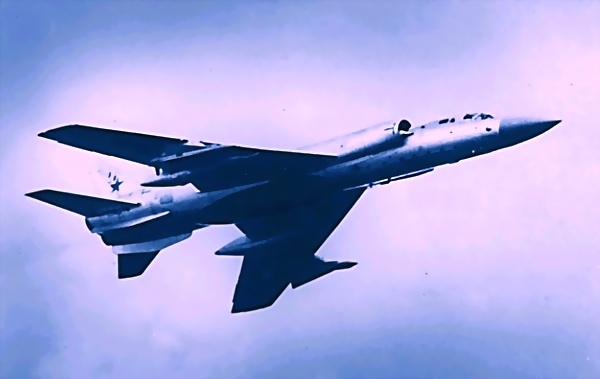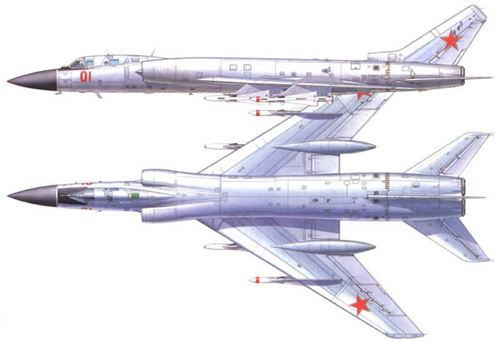|

Tupolev TU-128
Fiddler
Raul Colon
PO Box 29754
Rio Piedras, Puerto Rico 00929

The Soviet Union had a long and illustrious
history building large, unconventional aircraft, both bombers and
fighters. The amazing Tu-128 was another example in that long line of
designs. The Tu-128 was developed in the late 1950s with the primarily
mission of countering the perceived threat of America’s new heavy bomber,
the massive B-52 as well as the US Navy’s A-5 Vigilante and the proposed
US Air Force’s B-70 supersonic heavy bomber. The Tu-128 Heavy Interceptor
design concept was directly influenced by the unsuccessful Tu-98 Backfin
bomber project. Due to the specific nature of the 128, NATO codenamed
Fiddler, mission profile; the interception of America’s bomber fleet
before it could reach Soviet airspace, the aircraft needed to be huge in
order to carry the massive R-4 long range, air-to-air missiles (NATO
designation AA5-Ash) that could strike an incoming target nearly thirty
seven miles away. The developmental phase of the Fiddler began in the mid
1950s and ran well into the early 1960s. What emerged was truly a
revolutionary military aircraft.

SPECIFICATIONS
Fuselage Length 100’-0”
Fuselage Height 23’-0”
Wing Span 58’-0”
Total Wing Area 1,043sq ft
Empty Take-off Weight 57,232lb
Maximum Take-off Weight 94,800lb
Power Plant Two Lyul’ka AL7F-4 Afterburning Turbojets (23,539lb thrust)
Maximum Speed 1,296 mph
Operational Range 1,594 miles
Service Ceiling 65,617ft
The aircraft was manned by a crew of two. They entered the 128 through an
11 rung ladder. The cockpit was pressurized. The cockpit was protected by
a heavy upward hinged metal canopy fitted with a bullet-proof, V-shaped
windscreen. Two KT1 ejection seated were installed as a safety measure.
The nose cone housed the RP-5M Smerch-M Fire and Control Radar System. A
receiver antenna was fitted in a large ventral fairing for target echo
reception. The avionic package, state of the art at the time, was housed
in the lower-front section of the airframe. The package contained the
advance AP-7P autopilot system, the NvU-B1 navigational computer, and the
Put-4 flight control system that gave the Tu-128 semi-automatic level
flight guidance, airfield homing capability, altitude heading hold, and
automatic runway approach numbers. Eight fuel tanks were housed in the
centre of the airframe. They gave the 128 a total of 32,739lb of fuel
capacity. Four massive under wing pylons were used to carry the R-4T
infrared and later, the R-4PM radar-guided air-to-air missiles. The 128,
as was the case with the Tu-22 bomber, had its main undercarriage retract
backwards into a huge wing trailing edge, bullet fairings.
Around two hundred Fiddlers were built. They were used in front line
service by the Soviet Union’s Home Defence Fighter Force (PVO) and its
Frontal Aviation Air Regiments (VVS). Five variants of the 128 were
produced. The original Tu-128 Heavy Interceptor, the Tu-128A, the Tu-128UT
trainer unit, the Tu-128CH, and the final variant, the Tu-128M. The
Fiddler entered front line service with the PVO in the autumn of 1961. It
performed its principal mission profile well into 1988, when the aircraft
was finally retired from active service. By the mid 1990s, some Tu-128
examples were still flying, mainly training missions and/or target tugging
duties. The last version to enter service, the Tu-128M entered service in
the spring of 1979, is still active with some of Russia’s regional air
commands. Only about five to fifteen units remain airworthy as of today.
Still flying almost half a century after originally conceived, the Tu-128
is one of the world’s most amazing aircraft.
|
